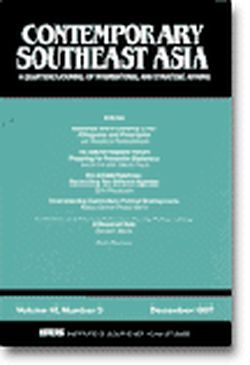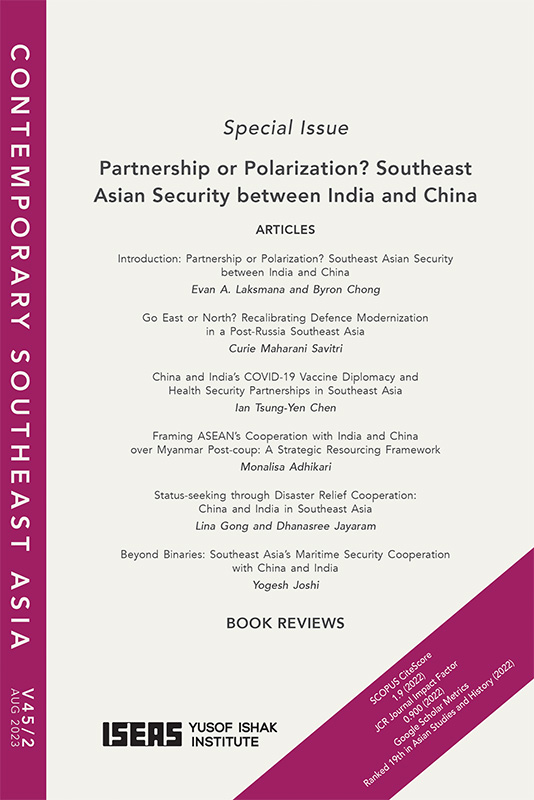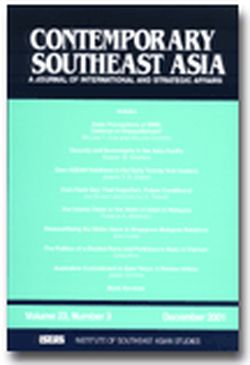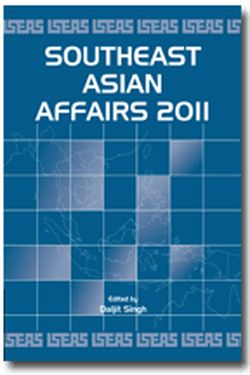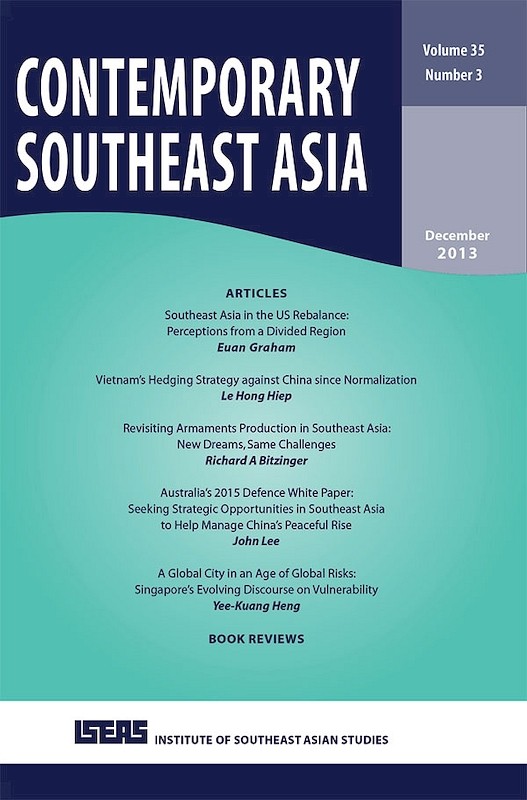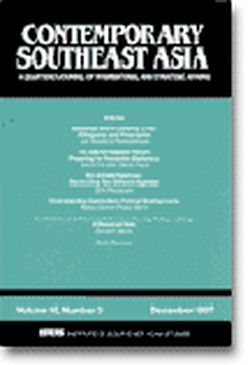Contemporary Southeast Asia: A Journal of International and Strategic Affairs Vol. 14/2 (Sept 1992)

Date of publication:
September 1992
Number of pages:
132
Code:
CS14/2
Contents
-
Preliminary pages
- ARTICLES
-
U.S. Foreign Policy in Southeast Asia: Implications for Current Regional Issues, by Charles Phua Chao Rong, author see abstractThis article explores the strategies and objectives of United States foreign policy in Southeast Asia since the turn of the present century. It argues that U.S. regional strategy before and after World War II was based upon a concrete definition of its over-arching objectives. These objectives were stability, trade and access. After World War II, these objectives were tied to a general security policy of opposing socialist systems. The result was a host of strategies designed to meet the demands of the time, which laid the seeds of suspicion and contradictory attitudes within and among Southeast Asian countries. Today, as evidence, there is a divergence of views between the United States and its closest ally in the region, the Philippines. This article also attempts to identify U.S. regional strategies and objectives in the 1990s. Finally, it asks: what are America's real objectives and strategies in Southeast Asia today?
-
China's Arms Export Policy and Responses to Multilateral Restraints, by Nazir A Kamal , author see abstractIn contrast to the pattern of preceding decades, financial considerations (namely, hard currency earnings) played a salient role in China's arms export policy during the 1980s. Earnings from arms exports rose sharply, mainly due to the Iran-Iraq war. Arms transfers by China aroused American concerns, particularly when ballistic missile sales began to undermine U.S. non-proliferation objectives in the Third World. Under considerable U.S. pressure (backed by credible threats to withdraw the most-favoured-nation status to China), Beijing agreed to join the Treaty on the Non-Prolifercition of Nuclear Weapons (NPT) and reluctantly offered to respect the U.S.-sponsored Missile Technology Control Regime (MTCR). Meanwhile, China continues to resist Western schemes for general restraints on conventional arms transfers as well as proposals for transparency in arms trade. China's status as a major arms supplier has been declining in recent years, in comparison to the 1980s, and its near-term prospects of regaining such status do not look promising.
-
ASEAN'S Singapore Rendezvous: Just Another Summit?, by Michael Antolik, author see abstractThe 1992 ASEAN Summit does not appear to be just another summit as it produced much more than the two previous meetings of heads of government. Perhaps because the leaders felt compelled to deal with major changes in the regional order, as they did at the first summit in 1976, this session may in time come to be viewed as a watershed rivalling the first gathering. But while time must pass to evaluate the significance of these new directions, such decisions reveal that ASEAN leaders continue to base agreements on their time-tested principles of pragmatism and accommodation.
-
The 1992 General Election and Indonesia's Political Landscape, by Blair King, author see abstractThe 1992 general election in Indonesia was harder fought than previous elections. The ruling Golkar obtained 68 per cent of electoral votes, a decline from 73 per cent in 1987, while the PPP (Partai Persatuan Pembangunan) won 17 per cent and the PDI (Partai Demokrasi Indonesia) 15 per cent. In terms of seats, the PDI increased its strength from 40 to 56, while the PPP improved its position marginally from 61 to 62. In comparison to the 299 seats it had in 1987, Golkar secured 282 seats in 1992 (losing mostly to the PDI). More significant for Indonesict's evolving political landscape is the future of the presidency - whether Soeharto will seek another term of office in 1993 and, if so, who will be the vice president. The question of the vice-presidency will be particularly important if Soeharto continues for another term because of his advanced years (he is 71 years old at present). Indisputably, there has been a general socio-economic uplift in the country, but the widening gap between the rich and poor is an issue which could become more salient. Meanwhile, non-governmental organizations and pro-democracy groups have proliferated in recent years, increasing the pressure for a more open political system.
-
Post-Marcos: The State of Philippine Politics and Democracy during the Aquino Regime, 1986-92, by A B Villanueva, author see abstractThe hope of a better life for Filipinos in a restored democracy in the Philippines in the post-Marcos era proved unfulfilled during the regime of Corazon Aquino. Aquino's indecisiveness, inexperience, and ineptness as a political leader were no match for the challenges of democratic governance. She was a disappointment to those who supported her simply because she failed to measure up to their expecations.
-
Foreign Assistance and Economic Policies in Laos, 1976-86, by Dorothea Arndt, author see abstractFrom 1976 to 1986, Laos'communist rulers progressively switched from Marxist economic policies to free market principles. This remarkable policy restyling, effected in the context of one of the poorest and most assisted economies in the world, reflected a shift in influence from communist to Western aid donors. In terms of influence, the former Soviet Union and the International Monetary Fund (IMF) were leaders of the two camps. While combining advice from the IMF and the Soviet Union could be termed a success from a diplomatic point of view, as it allowed the country to maintain a modest degree of political independence, from an economic viewpoint it was a costly strategy.
- BOOK REVIEWS
-
BOOK REVIEW: Business and Politics in Indonesia by Andrew McIntyre, by Ian Chalmers, author
-
BOOK REVIEW: The Vietnam Reader edited by Walter Capps, by Nick J Freeman, author

